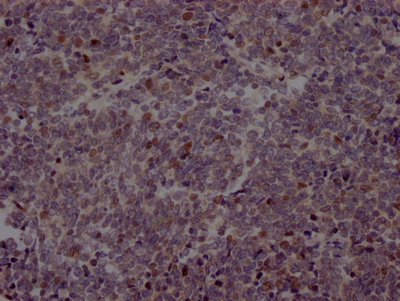The EZH2 monoclonal antibody produced using recombinant DNA technology can be used for detecting human EZH2 protein in ELISA and IHC applications. The antibody production involves the synthesis of the gene encoding the EZH2 monoclonal antibody through sequencing the cDNA of the EZH2 antibody-generating hybridomas. The hybridomas are formed by fusing B cells isolated from an immunized animal that inoculated a synthesized peptide derived from human EZH2, with myeloma cells. The synthesized gene is then cloned into a vector and transfected into cells for cultivation. The resulting EZH2 recombinant monoclonal antibody is purified from the cell culture supernatant using affinity chromatography.
The EZH2 protein is a histone methyltransferase and a member of the PRC2, which plays a role in gene expression regulation. Specifically, EZH2 catalyzes the methylation of histone H3 lysine 27 (H3K27), which is associated with transcriptional repression of target genes. In addition, EZH2 has also been shown to have non-histone targets, such as transcription factors and signaling molecules, and can regulate gene expression through non-catalytic mechanisms, such as protein-protein interactions. EZH2 is frequently overexpressed or mutated in cancer, where it can promote tumor growth and metastasis by repressing the expression of tumor suppressor genes and promoting the expression of genes involved in cell cycle progression and invasion.






